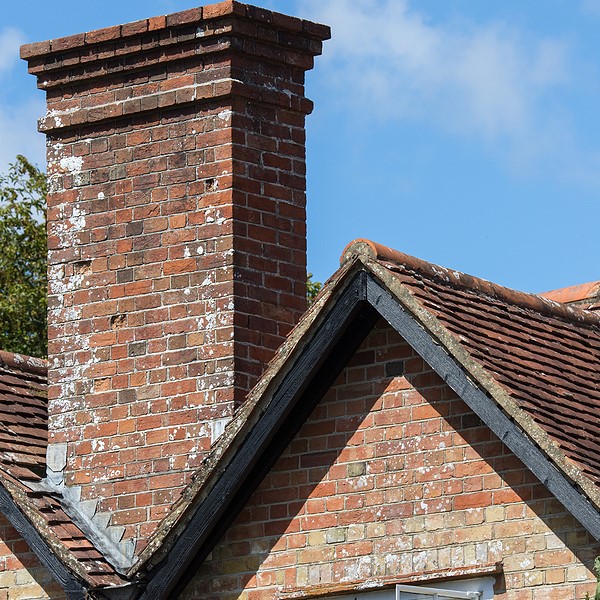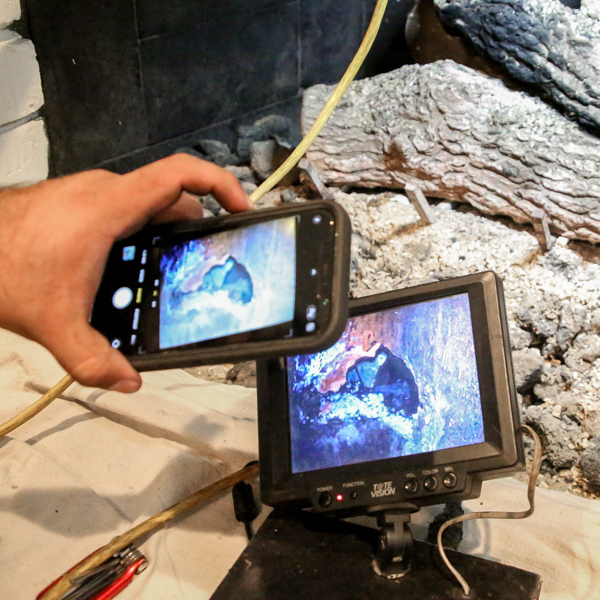Your Chimney’s Protective Components & Their Function
A fireplace provides a warm centerpiece in your home that makes get-togethers more enjoyable. While many homeowners are diligent about maintaining their fireplaces, they often neglect the chimney. Damage and lack of maintenance are leading causes of chimney fires. The chimney consists of protective parts to keep your family and home safe. Becoming familiar with these parts will help you know when they need repairing or replacing.
 What are the Parts of Your Chimney?
What are the Parts of Your Chimney?
Once humans discovered fire, the next quest became to bring it inside safely. At first, people built a hole into the roof for smoke to escape. Eventually, we perfected the system by inventing the chimney, which reduced smoke in the house and improved airflow for more robust fires. Let’s look at the parts of your chimney and how they keep you safe.
Chimney Damper
The chimney damper controls the airflow and smoke that flows through the chimney’s flue. It also keeps the cold air out and the warm air in. If the damper malfunctions, carbon monoxide can build up in your home, and you’ll have difficulty maintaining a healthy fire.
The Chimney Flue
Smoke and gasses produced by the fire flow up the chimney’s flue to the outside. Most chimneys are brick and mortar, which means they’re subject to breaking down from weather, lack of maintenance, and the hot gasses that come from usage.
The Chimney Crown
A chimney crown is a slab that lays over the chimney’s opening. Metal, concrete, or stone are the most common materials that make up a crown because they survive the elements better than brick. The job of the chimney crown is to protect the chimney from deterioration caused by foul weather. If the crown becomes compromised and remains unrepaired for too long, it exposes the chimney to moisture and other forms of damage.
The Chimney Cap
Chimney caps fit over the top of the chimney to guard against moisture from getting in. When water gets into the chimney, it can ruin the liner, damage joints, and corrode the damper. Another protection the chimney cap provides is against animals like birds and raccoons from getting in and setting up house.
Signs you Need Chimney Repair
It’s easy for a chimney to fall into disrepair without annual inspection and maintenance by a professional chimney service company. Failing to notice signs of chimney damage puts your home and family at risk of fire and carbon monoxide poisoning. Here are the most common signs to watch for that signal chimney damage.
Creosote Buildup
Burning wood emits gasses and other combustion byproducts that travel up your chimney, combine with moisture, and cool to form a sticky substance called creosote. If left unchecked, creosote builds up in your chimney, restricting airflow. Creosote is also highly flammable and is one of the primary causes of chimney fires. You can tell if you have creosote buildup by looking up the flue. If you notice shiny, tar-like stains, call a professional chimney sweep as soon as possible.
Visible Damage
Chimneys are rugged structures, but they’re not invulnerable to weather, natural disasters, the effects of hot gasses, and neglect. A good practice is to look at your chimney for signs of damaged bricks or mortar joints. Even minor imperfections can be disastrous if you don’t fix them quickly. Hiring a certified chimney specialist for annual chimney inspection is the best way to ensure your chimney is safe and to repair minor damage as it occurs.
Water Damage
When people notice water damage in their homes, they naturally think it’s a roof leak when it could be a damaged chimney. Water leaks lead to structural damage like rotting wood, sagging walls, and ceilings. Water leaks also cause mold and mildew to grow, which can affect your family’s health. If you see visible signs of water damage, call a professional to inspect your chimney to determine if it’s the problem.
Rust
Another sign your chimney needs repair is rust forming on the damper or firebox. Rust means moisture in your chimney, which can also lead to damaged mortar joints and a damaged chimney liner.
Damaged Flue Tiles
Clay is the most common chimney liner material. However, it isn’t as durable as metal. Time and moisture cause the clay liner to break apart, and you may notice pieces piling up in your fireplace. A cracked liner needs replacing as soon as possible because the liner protects your chimney from excessive heat, which can lead to a fire.
 How Often Should I Call for Chimney Inspection
How Often Should I Call for Chimney Inspection
According to the Chimney Safety Institute of America, the National Fire Protection Association Standard 211 says, “Chimneys, fireplaces, and vents shall be inspected at least once a year for soundness, freedom from deposits, and correct clearances.” Furthermore, it’s safer for you and your family to hire a professional chimney sweep to clean and inspect your fireplace system.
Professionals have the training, tools, and expertise to quickly identify problems and fix them before they become dangerous situations that put your family at risk. Professional chimney sweeps can also spot hidden issues you might overlook if you attempt to clean the chimney yourself, saving you time and money. Mercer County Chimney Services is a family-owned, full-service chimney company providing a comprehensive list of stove, fireplace, and chimney services, including:
- Professional chimney sweeping
- Chimney inspections
- Flue cleaning
- Chimney waterproofing
- Chimney repair, maintenance, and rebuilding
- Brick and masonry repair
- Chimney flashing
- And more!
We’re a certified member of the Chimney Safety Institute of America and the National Chimney Sweep Guild. We’re located in Hamilton, NJ, and proudly serve homeowners throughout Mercer County, including Plainsboro, Ewing, Hopewell, and Pennington. Contact us today to book an appointment by phone at 609-802-5288 or online at https://www.mercercountychimneyservices.com/contact-us/.



